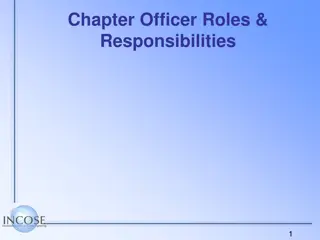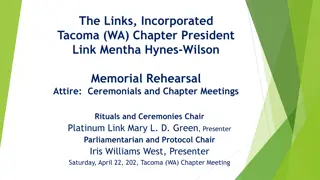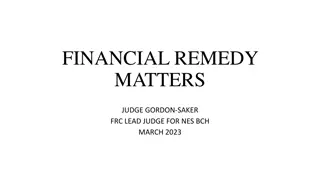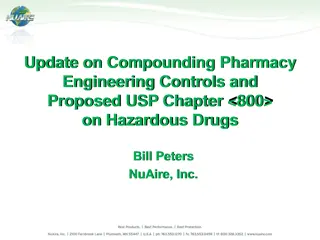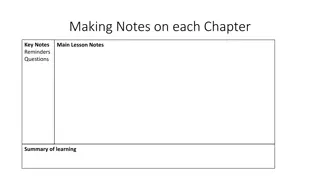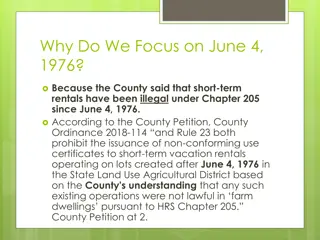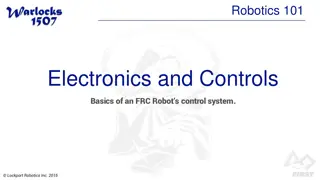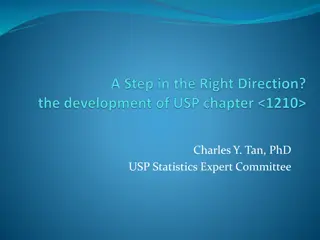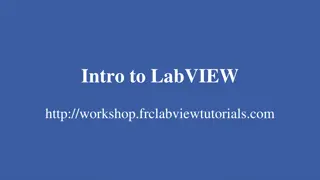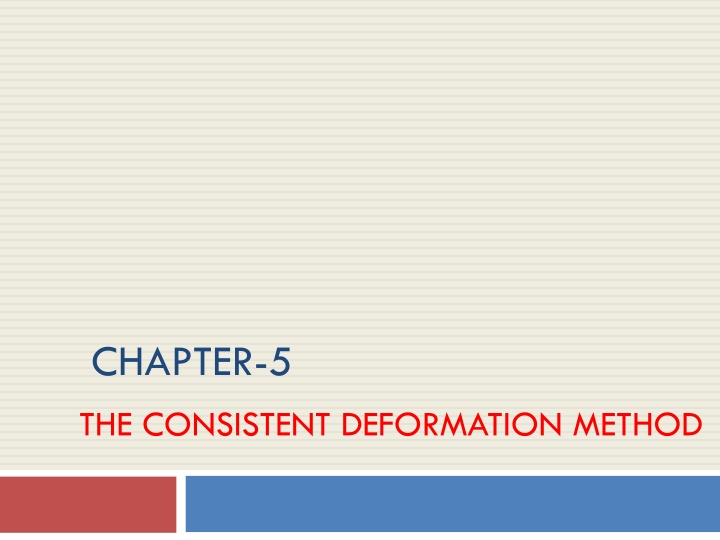
Structural Analysis Methods and Procedures
"Explore the consistent deformation method, method of virtual work, and force method of analysis for indeterminate structures. Learn about writing equations, satisfying compatibility requirements, and applying principles to determine unknown forces and displacements. Follow step-by-step procedures to analyze structures and calculate deflections and reactions."
Download Presentation

Please find below an Image/Link to download the presentation.
The content on the website is provided AS IS for your information and personal use only. It may not be sold, licensed, or shared on other websites without obtaining consent from the author. If you encounter any issues during the download, it is possible that the publisher has removed the file from their server.
You are allowed to download the files provided on this website for personal or commercial use, subject to the condition that they are used lawfully. All files are the property of their respective owners.
The content on the website is provided AS IS for your information and personal use only. It may not be sold, licensed, or shared on other websites without obtaining consent from the author.
E N D
Presentation Transcript
CHAPTER-5 THE CONSISTENT DEFORMATION METHOD
Method of Virtual Work [REVISION]
Methods of Indeterminate Structural Analysis FORCE Method:- consists of writing equations that satisfy the compatibility and force-displacement requirements for the structure to determine the redundant forces. UNKNOWNS --- FORCES DISPLACEMENT Method:- is based on writing force- displacement relationships for each member and then satisfying equilibrium requirements for the structure. UNKNOWNS --- DISPLACEMENTS
Methods of Indeterminate Structural Analysis
Force Method of Analysis PROCEDURE 1. Remove redundant supports until the structure becomes determinate. RESULT:- SUPPORTED POINTS WILL BE DISPLACED AND ROTATED.
Force Method of Analysis PROCEDURE 2. Apply the redundant action on the primary structure. RESULT:- A DISPLACEMENT/ROTATION IN THE OPPOSITE SENSE TO STEP 1 WILL DEVELOP AT APPLIED POINT.
Force Method of Analysis PROCEDURE 3. Apply the principle of COMPATIBILITY at the removed support. RESULT:- SINCE THE DISPLACEMENT/ROTATION CORRESPONDING TO THE REDUNDANT ACTION IS ZERO, THE DISPLACEMENT/ROTATION VALUES IN STEPS 1 AND 2 MUST BE EQUAL. =
Force Method of Analysis 0 = +
Force Method of Analysis The BB subscript means the deflection at point B due to the unknown reaction being applied at point B.
Force Method of Analysis PROCEDURE: Step 4:- Apply a unit load at the redundant point in the direction of the redundant action and compute the corresponding deflection developed due to this unit action. fBB is called the linear flexibility coefficient, and
Force Method of Analysis It follows that To get, the unknown redundant action. Addition Example [HIBBLER : PAGE 420]
Force Method of Analysis Indeterminacy of higher orders
Maxwells Theorem of Reciprocal Displacements The displacement of point B on a structure due to a unit load applied at point A, is equal to the displacement at point A if the unit load is applied at point B. PROOF: [Use the principle of virtual work] CONSEQUENCE:- The flexibility coefficient matrix is symmetric (i.e. fCB = fBC, fCD = fDC ..)

